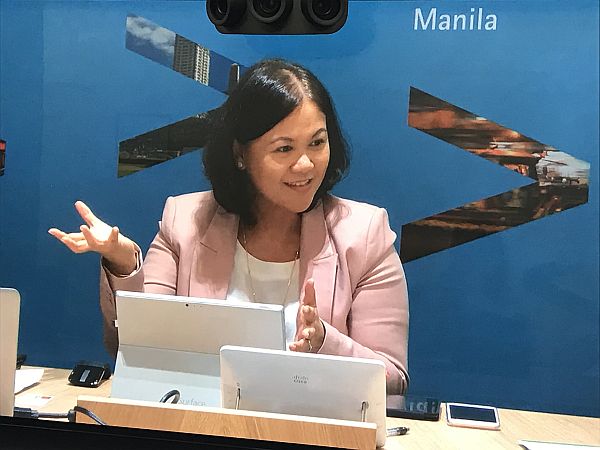
Ambe Tierro, senior managing director of Accenture Technology, shares the results of their gender pay survey at the firm’s offices in Cebu City. (CDN PHOTO/AILEEN GARCIA-YAP)
Study: Pay parity between men and women can be achieved by 2044 if …
Women need to take charge of their career, manage their careers proactively, aim high, make more informed choices, be digital fluent and immerse themselves to technology to fast-track achieving gender pay equality in developing countries like the Philippines.
This is the result of a study conducted by Accenture last year involving 28,000 women and men, including undergraduates in the Philippines and 28 other countries.
The report, Getting to Equal 2017, revealed that within decades, the pay gap could close if women take advantage of three career equalizers and if businesses, government and the academe provide the necessary critical support.
According to Ambe Tierro, senior managing director of Accenture Technology, it is an economic imperative to make sure that women are also encouraged to enter the labor force, which is why it is important to empower women and to also look into and understand their needs and what makes them stay in a job to solve the pay gap.
Tierro said the research found that globally, a woman earns an average of $100 for every $140 a man earns.
“Adding to this imbalance is the fact that women are much less likely than men to have paid work, which contributes to the ‘hidden pay gap’ which is for every $100 a woman earns, a man earns $258,” she said.
Tierro added that women are underrepresented in the global workforce saying only about 50 percent of the working age women have jobs compared to men’s 76 percent rate, which results in the “hidden pay gap” as women are more likely doing jobs that are not paid like doing the chores and taking care of the home and children.
On current trends, Tierro said the pay gap could close by 2080 in developed countries and 2168 in developing countries like the Philippines.
“The study, however, also showed that should women take advantage of the three equalizers, we could shorten the time to pay parity by 36 years in developed countries achieving gender pay equality by 2044. In developing countries, the changes could cut more than 100 years off the time to reach pay parity, achieving it by 2066 instead of 2168,” she said.
Equalizers
The first equalizer that women should learn is digital fluency.
Tierro said digital fluency is the need for women to be more adept in the use of technology, access online platforms, social media sites and be more informed.
“The idea is basically to embrace technology. In social media alone, there is unlimited information that a woman can have access to. These
information could help her become more aware of things. They can even have jobs online. There’s a lot of online jobs now that women can have access to if only they know how to maximize the digital world,” she said.
Women should also start to have a clear strategy of what their careers should be, where should their careers go.
Projection
As of 2016, the population in the Philippines is projected to be at 103,242,900. Of this number, almost half or about 49.6 percent are women based on the data from the Philippine Statistics Authority.
With the large number of women in the country, Tierro said it is then economically wise to make sure that women participate in the labor force and that the gender pay gap be addressed.
Disclaimer: The comments uploaded on this site do not necessarily represent or reflect the views of management and owner of Cebudailynews. We reserve the right to exclude comments that we deem to be inconsistent with our editorial standards.
